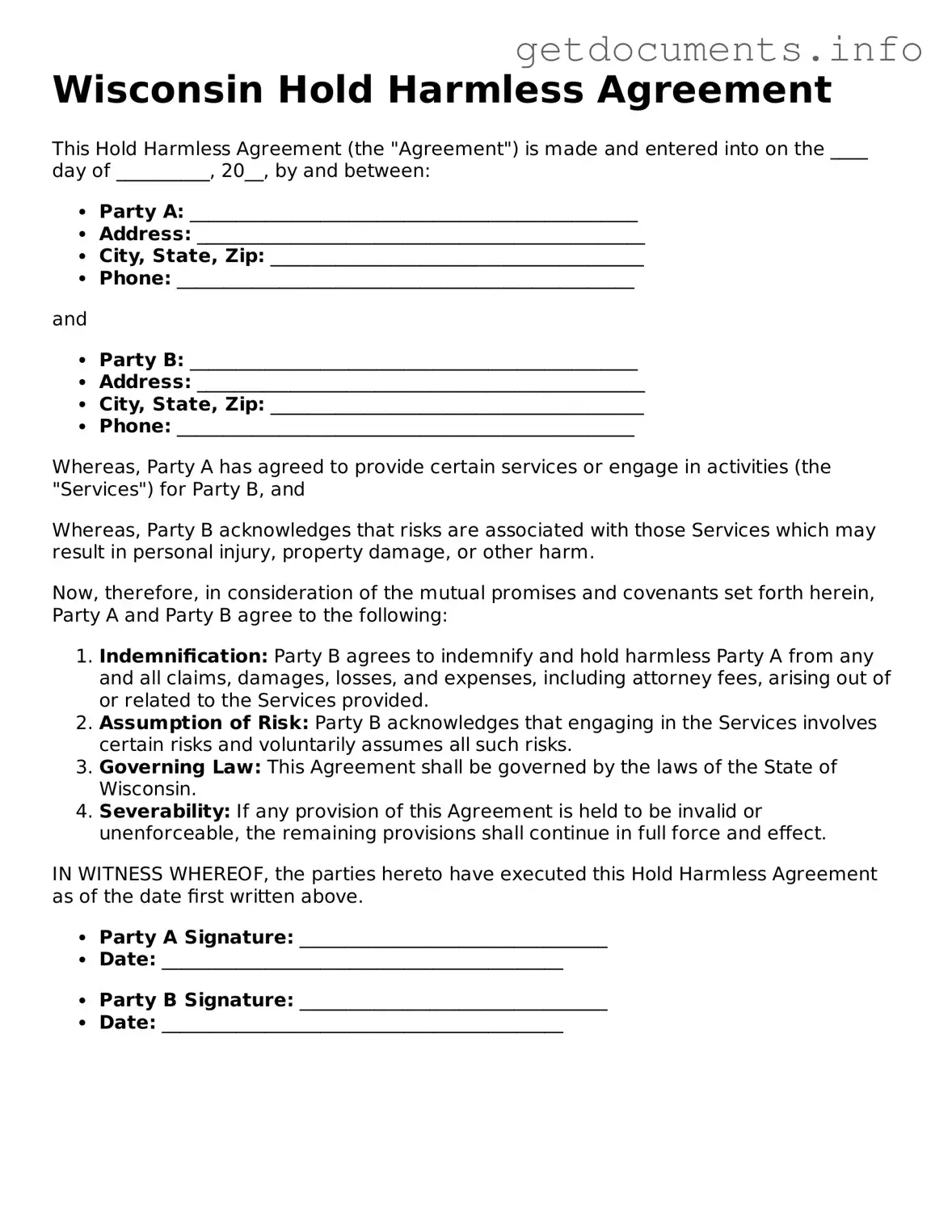Free Hold Harmless Agreement Template for Wisconsin
The Wisconsin Hold Harmless Agreement form is a legal document designed to protect one party from liability for any damages or injuries that may occur during a specific activity or event. By signing this agreement, individuals acknowledge the risks involved and agree not to hold the other party responsible. Understanding this form is crucial for anyone participating in activities where potential risks exist, so be sure to fill out the form by clicking the button below.
Access Hold Harmless Agreement Editor
